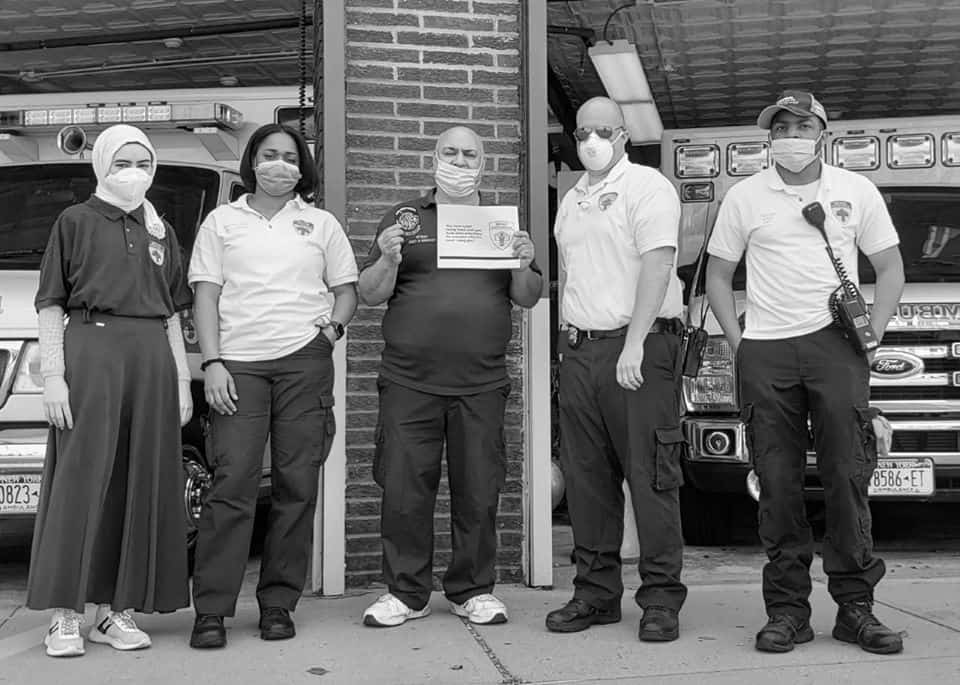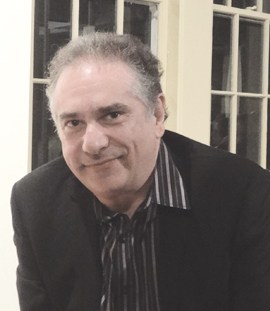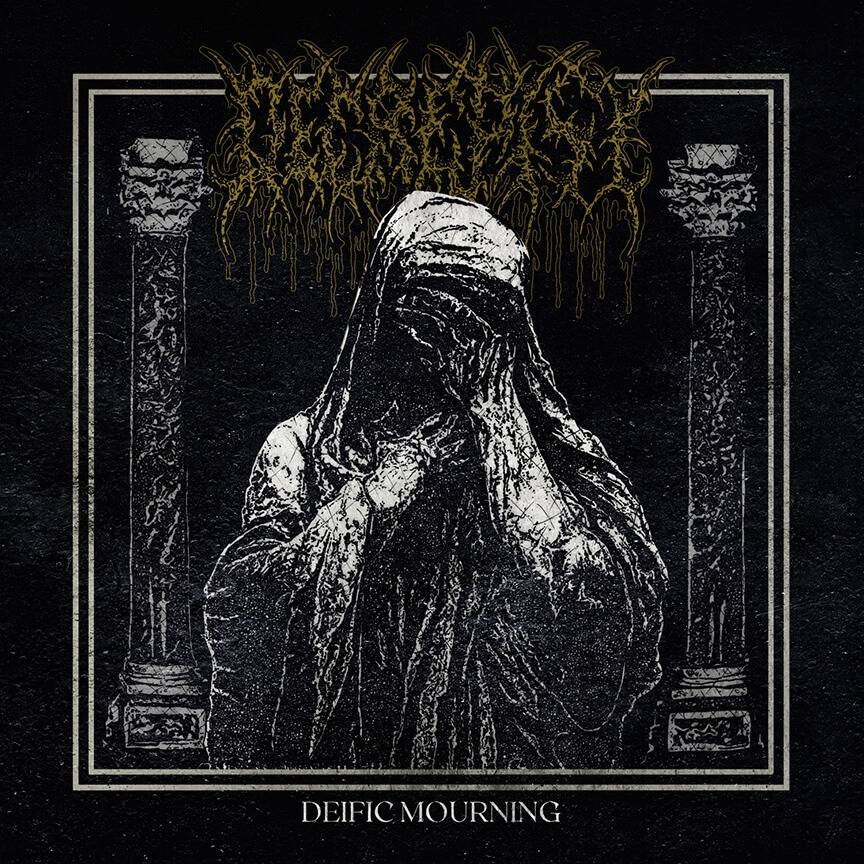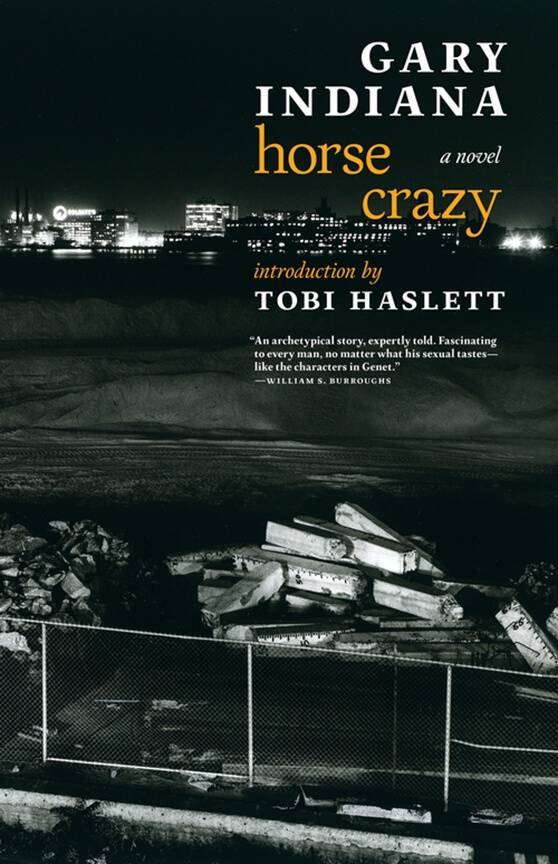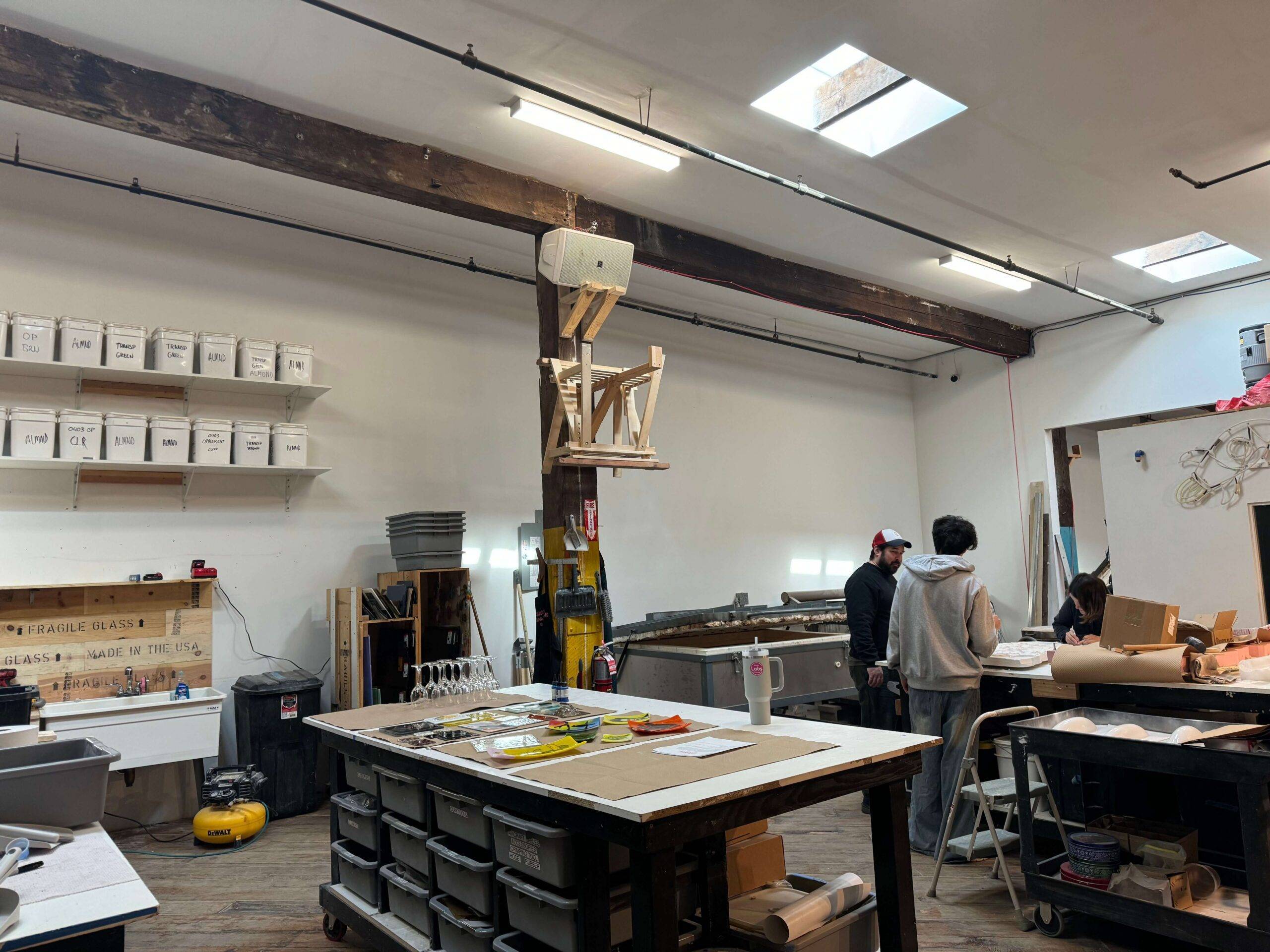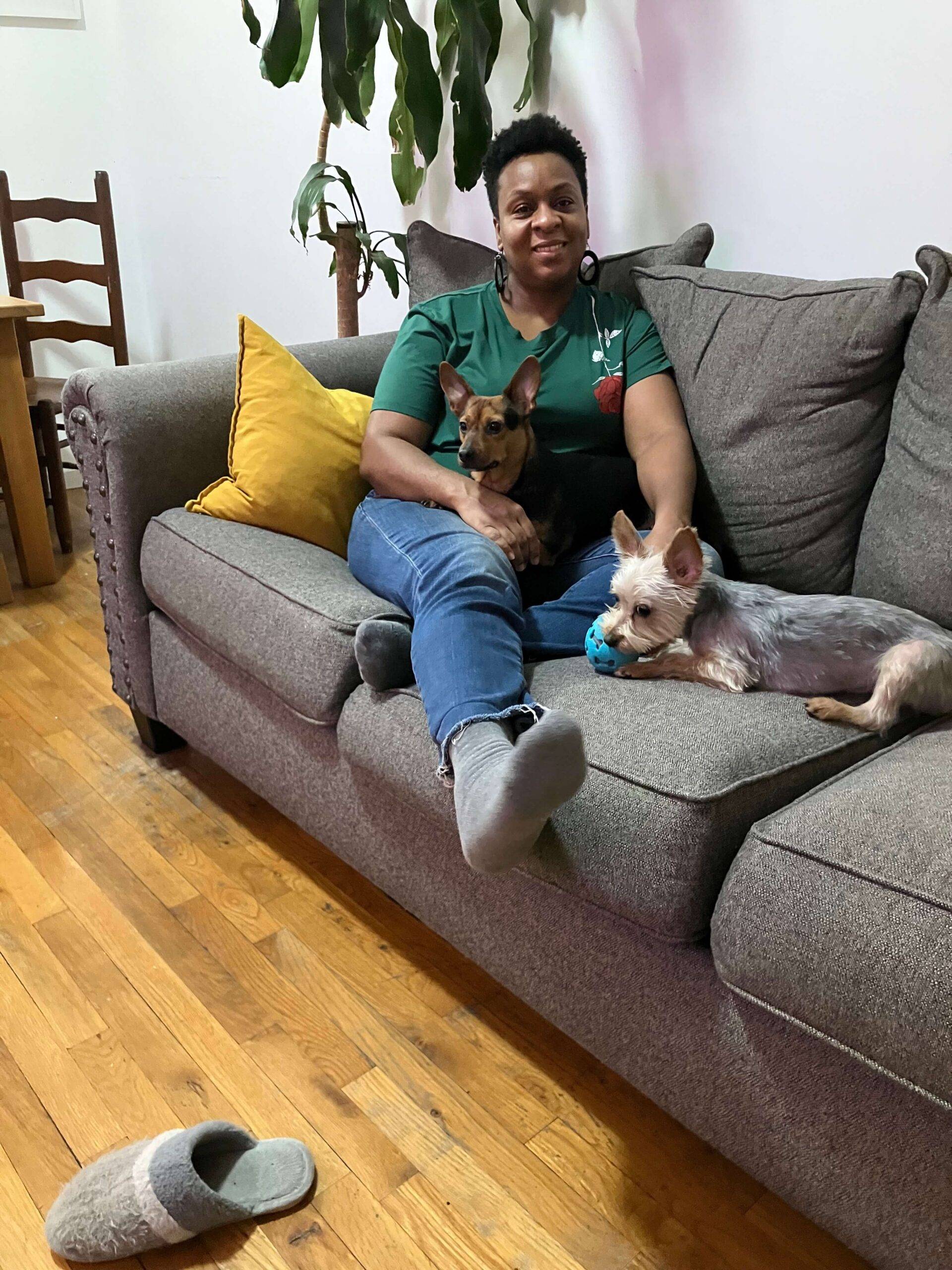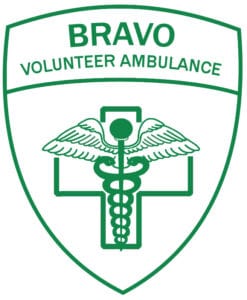
Since March, healthcare workers have come face-to-face with the coronavirus disease that has taken the lives of too many New Yorkers. This is the story of the Bay Ridge Ambulance Volunteer Organization (BRAVO) – a free, community-run ambulance service that serves Bay Ridge, Dyker Heights and Fort Hamilton. The organization has been working tirelessly during the pandemic to help not only residents in those neighborhoods but in the entire borough of Brooklyn as well.
A brief history
When city ambulance response times in Bay Ridge and Dyker Heights were about an hour back in 1974, then-Community Board 10 Chairman Hank Vogt worked with local politicians (including Assemblymembers Bob Kelly and Chris Mega, Congressman Hugh Carey and Senator Bill Conklin) and religious and civic leaders to launch a swift volunteer ambulance service. They presented the necessary documentation to the NYS Volunteer Ambulance Association and the Board of Health and obtained its charter and certificates soon after to operate. By that time, there were other volunteer ambulance corps in existence around the City, including the first squad that was established in 1941 in College Point, Queens.
BRAVO, which accepted more than 100 members, responded to its first emergency call on July 4 that same year – responding to the location in less than five minutes. The organization transitioned into 24-hour service on August 18 – around the same time when a second ambulance was purchased to meet increasing community demand.
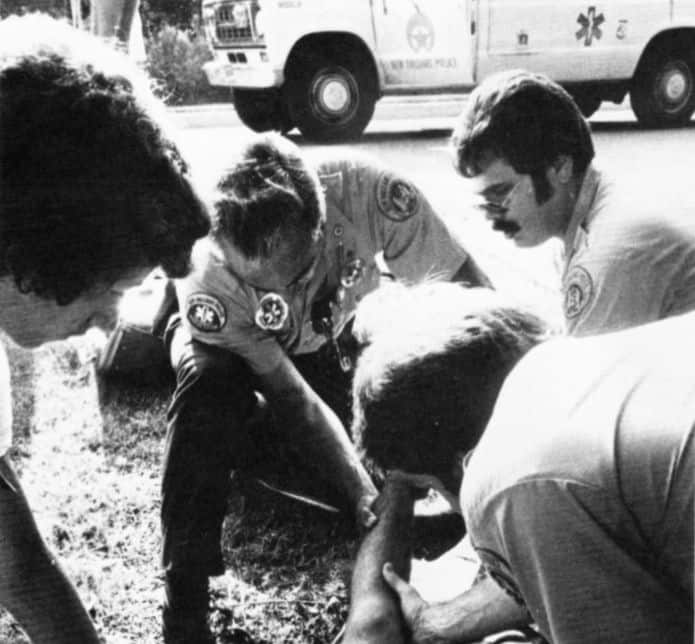
Three years later, BRAVO volunteers were chosen to be among the state’s first advanced emergency medical technicians and received training under Dr. Richard Seigel at Flushing Hospital. In 1986, BRAVO was chosen to pilot the Emergency Medical Technician – Defibrillation Program, which is now used by emergency services throughout the state and across the country. The corps responded to its 100,000th call for help in 1989, averaging more than 500 calls a month at the time, according to its website.
Throughout its 46-year-long history, BRAVO has gone beyond its borders to provide support and pre-hospital emergency care at major mass casualty incidents, including the plane crash at JFK International Airport in 1975, the Century 21 Department Stores warehouse collapse in 1990, the World Trade Center bombing in 1993, and the World Trade Center terrorist attacks on September 11, 2001.
Community support
BRAVO’s expenses amount to more $250,000 each year, namely due to insurance coverage. However, other expenses currently include utility bills, medical equipment and vehicle maintenance for its transport van and three ambulances. For instance, it costs BRAVO at least $200,000 to purchase and equip a new ambulance.

Because it doesn’t receive financial support from the federal or state government agencies, BRAVO relies on donations from the local community. To raise funds, for example, the organization has sold holiday greeting cards and has held biannual fundraisers and 5K runs. It also applies for grants, receives funds through memorials, bequests and estate-planned gift-giving programs, and receives subsidies through the City Council.
“I fight tooth and nail and will continue to fight, to keep BRAVO free because there are other voluntary ambulances around the city that bill for their services,” said retired FDNY Deputy Assistant Chief and BRAVO President Tony Napoli, who has been a part of the BRAVO family for the last 46 years. “The money that we received is not a payment of service in any way, shape or form. For nearly 50 years, nobody has ever gotten paid because we believe in the volunteer mantra. We are still surviving, and that’s mainly due to the fact that we own the vehicles and building [located at 86th Street and 7th Avenue].”
Facing COVID-19 head-on
BRAVO’s initial personal protective equipment (PPE) supply was sufficient prior to COVID-19, with Napoli noting, “Going into this, we were in good standings, and there was never a time when any of our crews lacked the necessary PPE they needed.”
But as the weeks went on, BRAVO, like many other healthcare providers, found themselves low on N95s and unable to order certain supplies from their suppliers. Assemblywoman Nicole Malliotakis, for instance, was distributing a wide range of PPE to first responders, hospitals, nursing homes, and long-term care facilities in Staten Island and Brooklyn in early April. She reached out to BRAVO via social media on April 9 and was later able to secure 50 N95 masks for them. However, the corps turned the donation down so that somebody else in need could have them instead.
“At that time we had received an allotment through New York State’s Regional Emergency Medical Service Council (REMCO). So when we received the REMSCO supplies [including gloves, surgical masks, face shields and disinfectants] at the same time, I was quick to express my gratitude to Malliotakis and told her to distribute them to others who needed them much more than we did,” Napoli told us on May 8.
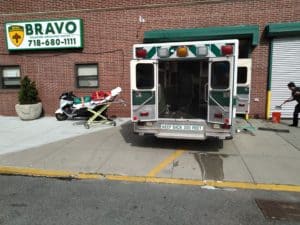
BRAVO’s Vice President of Operations David Aspiazu, who orders the medical supplies and handles the day-to-day ambulance operations, added that they have enough N95s, gowns and surgical masks – thanks to donations and allotments – and are secure for the next six months to a year.
Napoli explained that their volunteer base has shrunk during the pandemic – partly due to a majority of BRAVO members working full-time as FDNY EMS responders and local hospital EMTs, and partly because some don’t want to subject themselves (and their families at home) to exposure to the virus. Mostly, those who had the availability in their work schedules still volunteered with BRAVO.
“That’s because these individuals either grew up with us at BRAVO or they wanted to get back into their neighborhood to volunteer out of the kindness of their hearts,” Napoli said. “We rely on the goodwill and the good nature of the population to provide their services.”
BRAVO, which doesn’t run 24/7, had been out in the field about 26 hours a week since the “New York State on PAUSE” executive order was enacted on March 20, according to Aspiazu. Napoli added that most of the calls BRAVO answered came from the local community when its 11-digit number was specifically dialed. However, available BRAVO ambulances were also put into the FDNY EMS Mutual Aid Response System (MARS) to help alleviate the City’s backlog.
As a result, BRAVO superseded its boundaries on multiple weekends throughout the pandemic. In April, for example, BRAVO answered 19 emergency calls while in the MARS 911 system, while having at least one ambulance available for the Bay Ridge and Dyker Heights areas as well. Aspiazu said most calls in May were related to injuries and non-coronavirus-related emergencies, compared to the rampant COVID-19 and cardiac arrest calls received early on.
On May 26, BRAVO announced that the FDNY had specifically notified them of MARS demobilization, which would go into effect on May 31 – meaning the corps’ ambulances would be taken out of the MARS 911 system thereafter.
One volunteer’s experience
The number of volunteers dwindled when a handful exhibited coronavirus symptoms. Napoli, who rode on the ambulances throughout March, later self-quarantined with his family. Aspiazu tested positive for the coronavirus in April and was forced to quarantine for two weeks at home. “It was really scary in the beginning,” Aspiazu told us. “I know that we’re not going to go back to normal. It’s going to be a while before that, and I think that wearing a mask is going to become the new norm.”
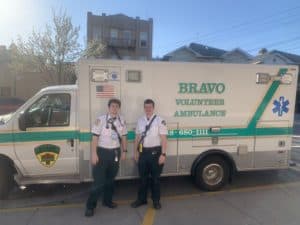
There were 68 volunteers who were still available to help out in early May. One of those volunteers included 21-year-old Joseph Culmine from Boro Park – one of the youngest members who joined the corps in September 2017. He works for FDNY EMS full-time, working 12-hour tours (5 pm to 5 am) in two days on/two days off intervals. Given his experience with the FDNY, he helped BRAVO members who weren’t as familiar with the 911 MARS system become acclimated to it. Despite the long hours and new scheduling due to the pandemic, he estimated that he had clocked in at least 100 volunteer hours since the shutdown started.
“For me, I felt it was an obligation,” Culmine told us on May 19, noting that he hadn’t ridden in a BRAVO ambulance in the last two weeks. “Whether it’s the coronavirus or not, it doesn’t matter because you can contract anything at any time. But as long as you take the right precautions, you should be fine.”
Culmine has also been the corps’ equipment officer since 2019, making sure all the ambulances are properly stocked before they leave the Bay Ridge headquarters. He noted that since Governor Andrew Cuomo’s executive order went into effect, keeping up with constantly changing rules and guidelines from the State and the Centers for Disease Control and Prevention made the job a little more stressful.
“I didn’t want to send anybody outside, especially working on the ambulance, without any surgical masks, N95s and gowns,” Culmine explained. “It was one of my main concerns and that weighed heavily on me because, if God forbid, anybody got sick, I would have that on my mind. Thoughts like ‘Did they go out without an N95 on the ambulance? Without a surgical mask? Without a gown?’ would probably race through my head.”
For more information about BRAVO, visit bravoambulance.org.
Top photo from BRAVO’s Facebook page: A BRAVO group in front of the BRAVO headquarters on May 19, 2020.
Author
-

George Fiala has worked in radio, newspapers and direct marketing his whole life, except for when he was a vendor at Shea Stadium, pizza and cheesesteak maker in Lancaster, PA, and an occasional comic book dealer. He studied English and drinking in college, international relations at the New School, and in his spare time plays drums and fixes pinball machines.
View all posts
George Fiala has worked in radio, newspapers and direct marketing his whole life, except for when he was a vendor at Shea Stadium, pizza and cheesesteak maker in Lancaster, PA, and an occasional comic book dealer. He studied English and drinking in college, international relations at the New School, and in his spare time plays drums and fixes pinball machines.

